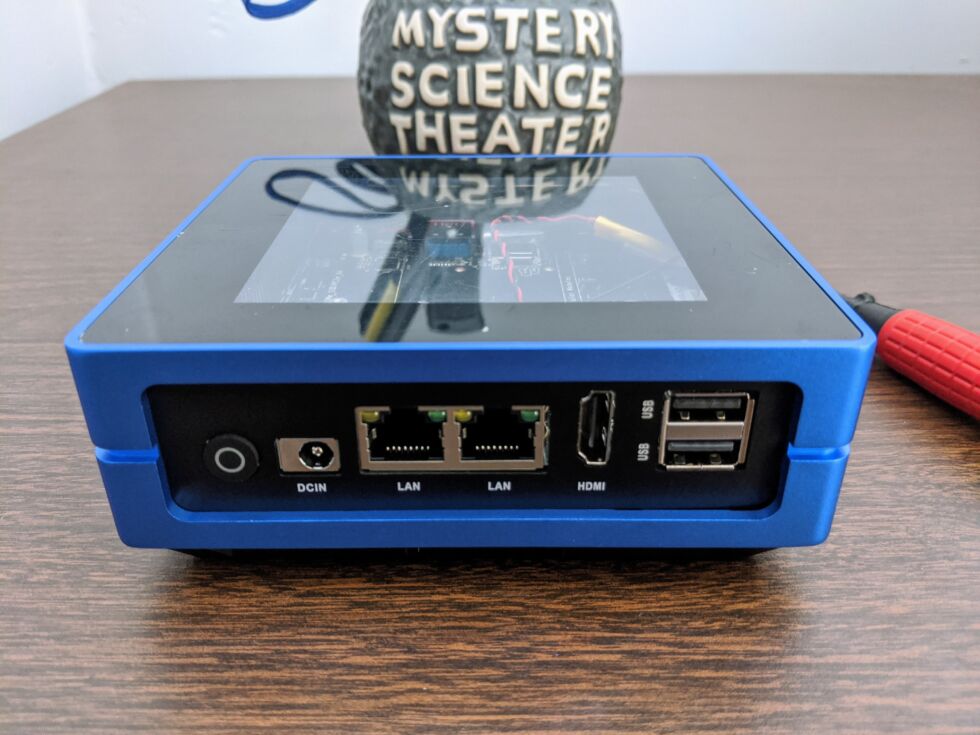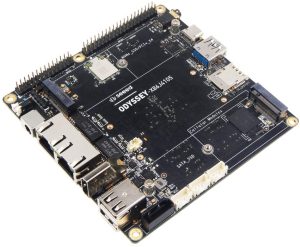Seeed Studio’s Odyssey is a mini-PC for big projects and small wallets

What can you do with a $200-ish mini-PC with plenty of power, tons of ports, and very few limitations? [credit: Jim Salter ]
Today we're going to take a look at Seeed Studio's Odyssey X86J4105-a maker/builder-tailored, Celeron-powered mini-PC. The little device seems like what you'd get if a Chromebox and a Raspberry Pi made sweet, sweet love-it's a Celeron-powered all-in-one system-on-chip (SoC) board, sold without a case, with Raspberry Pi-compatible GPIO headers and an Arduino coprocessor for more hardware-based maker projects.
I have a confession to make: I've never really loved the Raspberry Pi. Heresy, I know! But despite how seriously cheap the much-loved little boxes are, they never seem quite powerful enough for the projects I'd be interested in tackling. On occasion, I've flirted with other ARM mini-PCs that are a little more expensive and a lot more powerful-like Odroid XU4, or the newer Odroid N2-but they still felt pretty constrained compared to even budget x86 PCs. The Odyssey seems tailor-made to address those performance concerns.
Specifications and capabilities| Specs at a glance: Odyssey X86J4105 | |
|---|---|
| OS | Windows 10 Enterprise (activated) |
| CPU | Quad-core Celeron J4105 |
| RAM | 8GiB LPDDR4 |
| GPU | integrated Intel UHD 600 |
| Wi-Fi | Dual-band Intel 9650 Wi-Fi 5 + Bluetooth 5.0 |
| SSD | Sandisk 64GB (59.6GiB) eMMC |
| Connectors |
|
| Price as tested | Odyssey with activated Win10 Enterprise: $258 Seeed re_computer case: $20 |
 Seeed Studio Odyssey X86J4105 Mini PC Buy Now $229 from Amazon (64GB eMMC)$218 from Seeed Studio (64GB eMMC) (Ars Technica may earn compensation for sales from links on this post through affiliate programs.)
Seeed Studio Odyssey X86J4105 Mini PC Buy Now $229 from Amazon (64GB eMMC)$218 from Seeed Studio (64GB eMMC) (Ars Technica may earn compensation for sales from links on this post through affiliate programs.) Odyssey's quad-core Celeron SoC might not be a powerhouse by desktop standards-but it's more than powerful enough to run a full Windows 10 desktop experience. Add in 8GiB of RAM, 64GB eMMC storage, one SATA-III port, two 1Gbps Ethernet jacks, dual M.2 slots (one B-key and one M-key), Intel 9560 Wi-Fi, Intel UHD 600 graphics and a full-size HDMI port, and it's hard to figure out what this $260 box can't do.
Read 19 remaining paragraphs | Comments